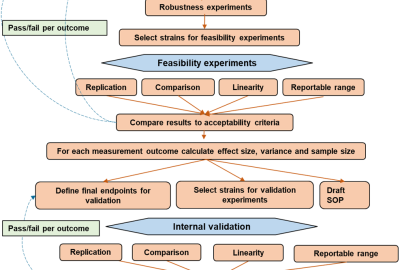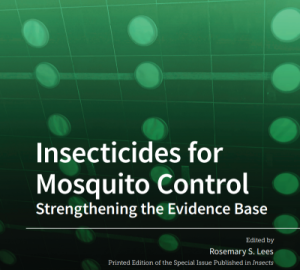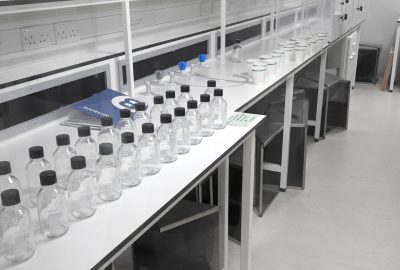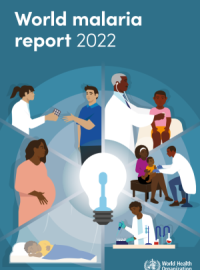All
Latest News
Publications
Experts publish a protocol for characterising mosquito strains used in bioefficacy testing for bed nets containing both a pyrethroid and a second active ingredient

Insecticide-treated nets (ITNs) are critical to the control of malaria, but widespread resistance of mosquitoes to pyrethroids, the primary insecticide class used in ITNs, necessitates the ongoing development of new types of ITNs, such as those which contain a pyrethroid plus a second active ingredient (AI). As a result, we must adapt methods to effectively assess the insecticidal bioefficacy of each AI independently. Bioassays are used to assess how effectively the net kills mosquitoes, and in durability monitoring studies to measure how quickly the insecticide(s) are lost or degraded during routine use.
By measuring the rapid knock-down of a pyrethroid-susceptible strain of mosquitoes to assess the bioefficacy of the pyrethroid component, then using a pyrethroid-resistant strain to measure the bioefficacy of the second ingredient, we are able to effectively assess the bioefficacy and durability of these dual-AI ITNs. Resistance status, however, varies between populations of mosquitoes that possess different resistance mechanisms, and resistance in a mosquito population can also change over time. This raises the question of how to ensure comparability of bioefficacy testing of this type of ITN, both across tests within and between test facilities, and also over time.
To meaningfully interpret the results from bioassays and compare results between experiments it is important to maintain consistency as far as possible by standardising or characterising experimental conditions and inputs. Between April 2020 and August 2021, a group of experts originating with participants in the November 2019 American Society of Tropical Medicine and Hygiene conference, and expanded by invitation, met virtually to explore approaches to standardise or characterise resistant mosquitoes to be used in efficacy testing of dual-AI ITNs. After assessing the advantages and disadvantages of nine potential approaches proposed during their discussions, the group identified a preferred approach, then drafted and iteratively refined a protocol to support standardised, comparable dual-AI ITN bioefficacy testing and durability monitoring.
The recommended protocol consists of characterising mosquitoes used for bioefficacy testing before and after a round of bioassays, such as at each time point in a durability monitoring study. Adoption of this pragmatic yet informative approach will help in the interpretation of data from durability monitoring studies of these new net types. The approach can be adapted to characterise mosquitoes in other research involving biological materials where characterisation will help to generate consistent data which is more readily interpreted and compared, or where insecticide-treated materials are being used experimentally.
Dr Rosemary S. Lees, Programme Manager and Methods Validation lead for I2I, and lead author of the paper stated: “It has been a pleasure to work with this group of experts to develop what we think is an effective and pragmatic way to ensure that data sets from bioefficacy testing of dual-AI ITNs can be more meaningfully interpreted and more readily compared. We hope that the SOP will be a useful resource for the community, which can be adapted for other purposes where it is useful to characterise mosquitoes used in research.”
Access to the publication can be obtained at: https://www.mdpi.com/2075-4450/13/5/434





